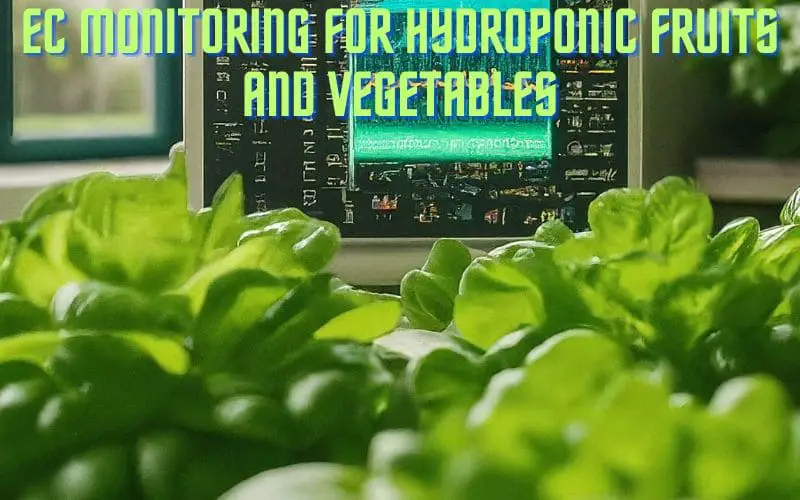EC Monitoring for Hydroponic Fruits and Vegetables Explored!

Introduction
If you’re passionate about growing your own fruits and vegetables through hydroponics, you’re likely familiar with the importance of maintaining optimal nutrient levels for your plants. Electrical Conductivity (EC) Monitoring plays a crucial role in ensuring the success of your hydroponic garden. In this article, we’ll delve into the key factors of EC Monitoring for Hydroponic Fruits and Vegetables, exploring sensor-based monitoring systems, automated nutrient delivery, and data-driven analysis software. Let’s embark on a journey to uncover the innovative techniques that will elevate your hydroponic gardening experience.
Sensor-Based EC Monitoring Systems
1. Sensor-Based EC Monitoring Systems
Sensor-based EC (Electrical Conductivity) monitoring systems are essential for tracking and managing the conductivity levels in various applications. These systems utilize sensors to measure and analyze the electrical conductivity of a medium, providing valuable insights into the composition and quality of the substance being monitored.
- Sensors: Specialized sensors designed to detect and measure electrical conductivity levels accurately.
- Monitoring Devices: These devices are responsible for collecting and processing data from the sensors.
- Data Analysis Software: Advanced software that interprets the conductivity data and presents it in a user-friendly format for analysis.
Sensor-based EC monitoring systems are widely used in various industries and fields, including:
- Agriculture: Monitoring soil conductivity for efficient irrigation management and nutrient delivery.
- Environmental Monitoring: Assessing water quality and contamination levels in natural water bodies.
- Industrial Processes: Ensuring optimal conductivity in manufacturing processes and chemical reactions.
These systems play a crucial role in maintaining and optimizing the conductivity of diverse mediums, leading to improved productivity, resource utilization, and environmental sustainability.
Automated Nutrient Delivery Systems
2. Automated Nutrient Delivery Systems
Automated Nutrient Delivery Systems (ANDS) are an essential component of modern agricultural practices. These systems utilize advanced technology to precisely deliver the necessary nutrients to plants, ensuring optimal growth and productivity. Here are some key points to consider when discussing ANDS:
- Advanced Control Systems: ANDS incorporate sophisticated control systems that monitor environmental conditions and customize nutrient delivery based on the specific requirements of the plants.
- Precision Irrigation: ANDS enable precision irrigation, delivering water and nutrients directly to the root zone of the plants, minimizing wastage and maximizing efficiency.
- Data-Driven Approach: Utilizing data from sensors and analytics, ANDS employ a data-driven approach to adjust nutrient delivery in real-time, responding to the changing needs of the plants.
- Remote Monitoring and Management: With remote monitoring capabilities, ANDS allow farmers to monitor and manage nutrient delivery systems from anywhere, providing convenience and flexibility.
- Integration with IoT and AI: The integration of Internet of Things (IoT) and artificial intelligence (AI) technologies enhances the capabilities of ANDS, enabling predictive analytics and autonomous decision-making.
With the continuous advancement of technology, ANDS are poised to play a pivotal role in sustainable and efficient agriculture, contributing to increased crop yields and resource conservation.
Conclusion
In conclusion, the integration of these three methods represents a paradigm shift in hydroponic cultivation. By harnessing the power of technology and data growers can optimize nutrient delivery. You can also maximize plant growth. This will result in an abundance of high-quality fruits and vegetables. The future of hydroponic gardening is bright, promising, and incredibly bountiful. How will you embrace the era of data-driven cultivation in your hydroponic oasis?
